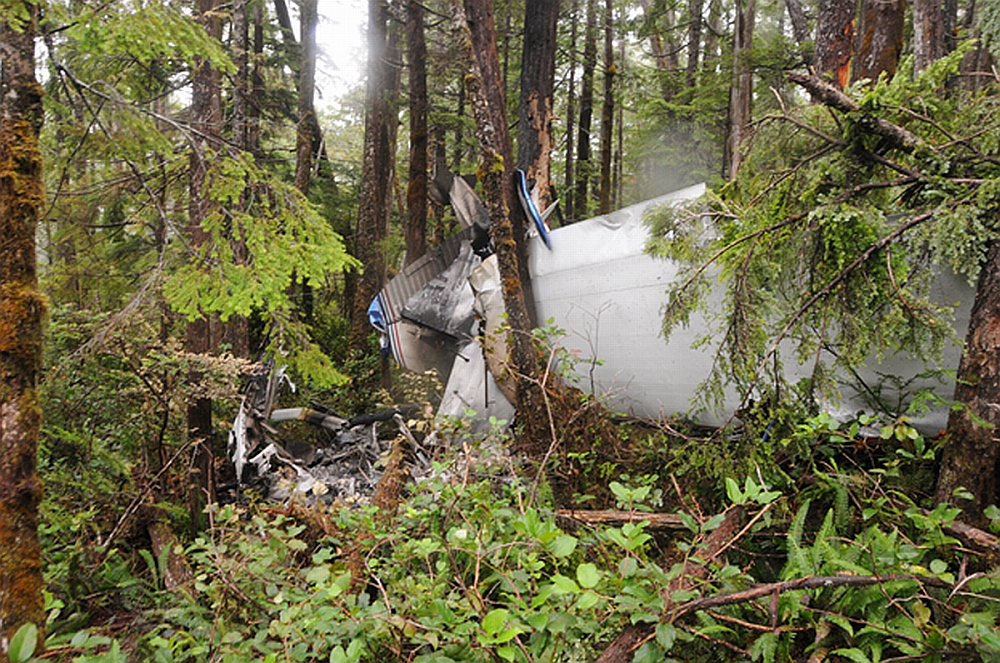Controlled flight into terrain
Air Nootka Ltd.
de Havilland DHC-2 (floatplane) C-GPVB
Hesquiat Lake, British Columbia 3 nm W
The occurrence
At 1015 Pacific Daylight Time, the de Havilland DHC-2 (Beaver) floatplane (registration C-GPVB, serial number 871), operated by Air Nootka Ltd., departed Hesquiat Lake, British Columbia, with the pilot and 5 passengers for Air Nootka Ltd.'s water aerodrome base near Gold River, British Columbia. Visibility at Hesquiat Lake was about 2 ½ nautical miles in rain, and the cloud ceiling was about 400 feet above lake and sea level. Approximately 3 nautical miles west of the lake, while over Hesquiat Peninsula, the aircraft struck a tree top at about 800 feet above sea level and crashed. Shortly after the aircraft came to rest, a post-crash fire developed. All 6 persons on board survived the impact, but the pilot and 1 passenger died shortly after. A brief 406 megahertz emergency locator transmitter signal was transmitted, and a search and rescue helicopter recovered the survivors at about 1600.
Media materials
News release
TSB investigation into August 2013 B.C. floatplane crash identifies flight at low level in poor weather as causal
Read the news release
Deployment notice
Transportation Safety Board of Canada to deploy investigators to the site of a floatplane accident near Tofino, British Columbia
Richmond, British Columbia, 17 August 2013 — The Transportation Safety Board of Canada (TSB) will deploy a team of investigators to the site yesterday's accident involving a de Havilland DHC-2 Beaver floatplane near Tofino, BC. The TSB will gather information and assess the occurrence.
Investigation information
Download high-resolution photos from the TSB Flickr page.
Class of investigation
This is a class 3 investigation. These investigations analyze a small number of safety issues, and may result in recommendations. Class 3 investigations are generally completed within 450 days. For more information, see the Policy on Occurrence Classification.
TSB investigation process
There are 3 phases to a TSB investigation
- Field phase: a team of investigators examines the occurrence site and wreckage, interviews witnesses and collects pertinent information.
- Examination and analysis phase: the TSB reviews pertinent records, tests components of the wreckage in the lab, determines the sequence of events and identifies safety deficiencies. When safety deficiencies are suspected or confirmed, the TSB advises the appropriate authority without waiting until publication of the final report.
- Report phase: a confidential draft report is approved by the Board and sent to persons and corporations who are directly concerned by the report. They then have the opportunity to dispute or correct information they believe to be incorrect. The Board considers all representations before approving the final report, which is subsequently released to the public.
For more information, see our Investigation process page.
The TSB is an independent agency that investigates air, marine, pipeline, and rail transportation occurrences. Its sole aim is the advancement of transportation safety. It is not the function of the Board to assign fault or determine civil or criminal liability.
